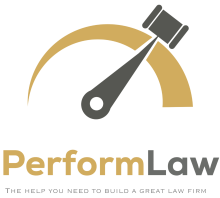In the dynamic legal services arena, law firms increasingly recognize the value of strategic compensation models. Central to this evolution is the understanding that aligning associate and partner recompenses with the firm’s strategic milestones bolsters growth and stability. The latitude of planning for one, three, five, or even ten years out offers an expansive view critical for calibrating a firm's trajectory toward success.
We suggest a refreshed approach, weaving base salaries and performance incentives into a cohesive compensation policy. This policy navigates through the life cycle stages of a law firm — from its nascence as a startup to the zeniths of maturity and staving off a decline. Each stage demands tailored compensation strategies to fuel aspirations and retain top-tier legal talent.
Introducing the Long-Term Compensation Strategy
The compensation policy update embodies a nuanced balance over time, stretching across pivotal years that shape the firm's legacy. This long horizon paves the way for a reward system that meets immediate objectives and secures multi-year progress.
Compensation Elements in Focus
- Higher Base/Lower Bonus: Utilizing above-market base salaries paired with modest bonuses (5-10% of salary) to establish competitive entry points that appeal to associates in today's market while providing stable financial appeal amid rising living costs.
- Lower Base/Higher Bonus: For firms aiming to incentivize peak performance, lower-than-average base salaries supplemented with substantial bonuses (up to 20% of salary for top performers) align rewards directly with individual contribution and firm profitability.
Strategic Adaptation
This new compensation framework is designed to morph fluidly with the firm's development stage:
- Startup and Growth: Focused on attracting talent and establishing a market presence with competitive baseline salaries.
- Hyper-Growth and Maturity: Gradually shifting to a performance-centric model, encouraging associates to contribute beyond billable hours through business development and mentorship roles.
Model Efficiency
Utilizing precise financial modeling, firms can scry into the future, taking stock of potential salary adjustments and bonus distributions against the projected financial standings. The utilization of historical benchmarks for compensation as a percentage of billings/collections refines these projections and offers robust guidelines:
- 0-3 Years: 25%-30%
- 4-7 Years: 30%-35%
- 8+ Years: 35%-40%
Simultaneously, expected profit margins over ten years provide a prudent gauge for remuneration sustainability.
Disclaimer
It is essential to understand that these figures vary according to firm size, practice scope, billing rates, overhead structure, and growth stage.
Implementing Evolution
The endorsement of high-based compensation in the early stages caters to today's competitive associate market. However, as senior attorneys approach a production plateau, the firm should transition towards a model amplifying the bonus structure, encouraging contributions in business development, mentorship, and firm governance.
Conclusion
This perspicacious shift in compensation policy endeavors to tether associates' professional augmentations to the firm's overarching goals. In the grand tapestry of a firm's life cycle, a strategic compensation plan emerges as a pivotal stitch that harmonizes economic prudence with strategic foresight.




 i
i


